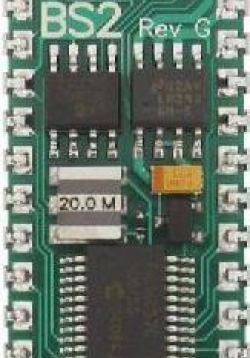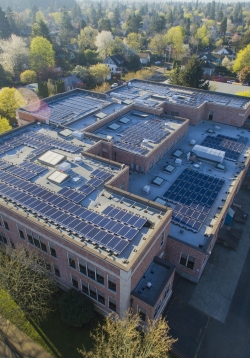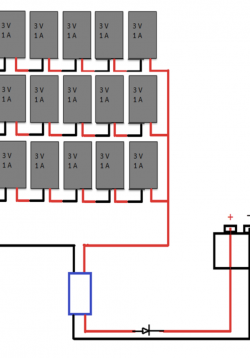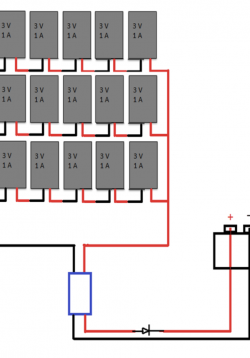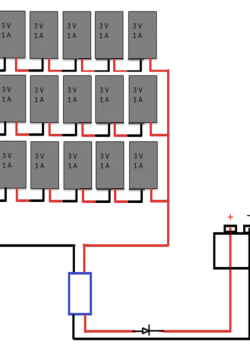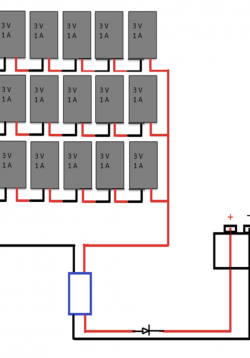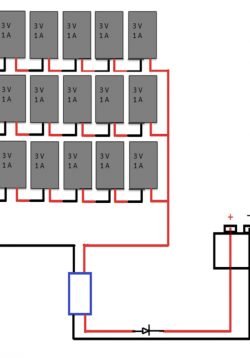Controlling a Servo
In this lesson students will learn how to control a servo using the Basic Stamp. Then students will combine the photoresistor from the previous lesson with the servo to create a light controlled servo.
Creating a Light-Tracking Servo
Students will learn how to program the Basic Stamp to use information from two photoresistors to point a servo at a light source. This will be the first degree of freedom for the flower head.
Dual Axis Light Tracking
Students will take the previous lesson and apply them in creating a light tracker with two degrees of freedom. The axis of rotation will be about the horizontal and vertical. Teams will have everything they need to make this build work. They have already...
Integrating Solar Power
At this point students should have a working robotic sunflower that will track the sun with 2 degrees of freedom. This next lesson powers the whole system with a photovoltaic module. A Zener diode is used to charge a 6V motorcycle battery which then...
Solar Site Assessment
Students will do an actual site assessment to determine the available solar resource for a chosen location.
Replacing Fossil Fuels?
As students begin to look at the role photovoltaics might play within the transportation energy sector, it is important for them to understand why the phasing-out of fossil fuels is such a daunting task. This lesson is designed to help students comprehend...
Background Research on Alternative Transportation Vehicles
Students completing this lesson will already have identified some of the problems inherent in the development of ideas to replace fossil fuels in the transportation sector. Students will now conduct some research to identify some of the pros and cons of...
Can Portable PV Charge Vehicles?
In this lesson, students will begin to explore the potential and challenges related to using photovoltaics to supplement the power needed to charge batteries in BEVs. Students will test a variety of wiring options related to series and parallel wiring....
Designing a Solar Charger
In this lesson, students will further explore the potential and challenges related to using photovoltaics to supplement the power needed to charge batteries in BEVs. Students will be provided with a 12 V lead-acid battery and several 3 V, 1.5 A solar...
Photovoltaic Solutions "Shark-Tank Style"
In this lesson, the students will take their knowledge gained in the previous activities to innovate design solutions that will allow PV technology to plan an increased role in the transportation sector. The challenge given to them is to design a BEV that...

